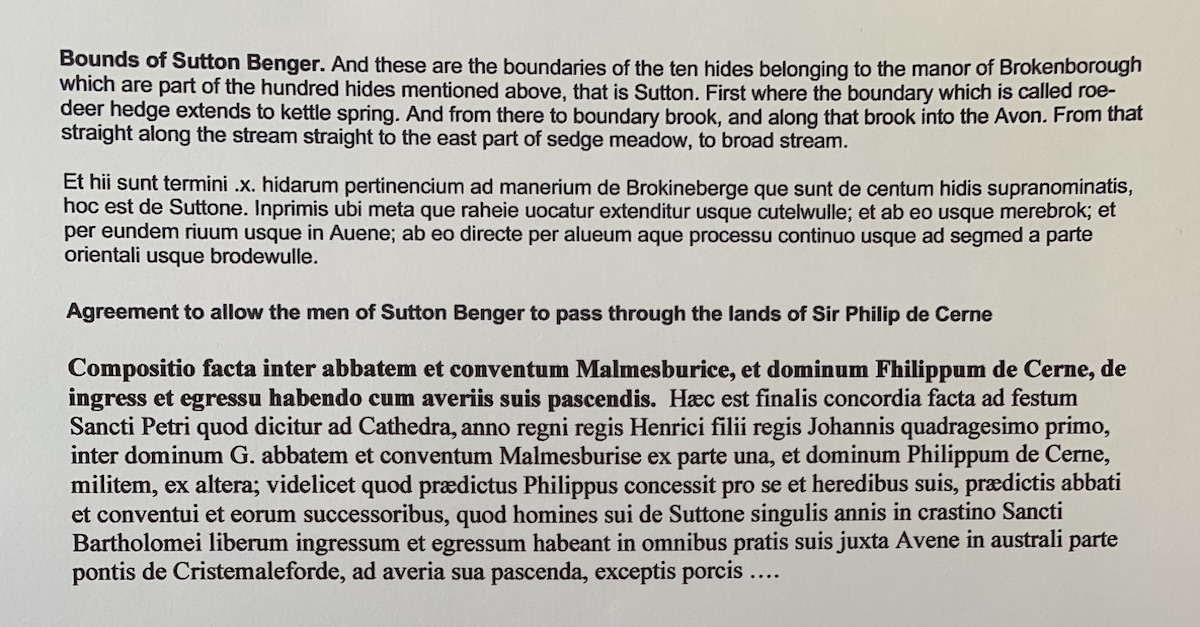Saxon Times
Page last updated: 29 May 2023, 2:03pmAlthough archaeologists and historians are beginning to shine lights on ‘The Dark Ages’ there is always going to be a lack of detailed information from before 1500 about small villages like Sutton Benger and Draycot Cerne. But historians are confident that the Saxons established farms, farmsteads and settlements along the River Avon following the Battle of Dyrham in 577, when the Wessex (West Saxon) King Ceawlin was victorious and gained control of the area from Bath to Cirencester to Gloucester. One of the reasons for this confidence is that the names of the villages have Old English / Saxon roots: Sutton (meaning ‘south farm’), Draycot (‘house or cottage where drays are kept’) and Christian Malford (‘ford by a cross’). The land along the Avon was especially fertile, at a time when there were large forests to the south of Chippenham and to the north and east of Malmesbury. Both towns grew in importance in the period 600 – 1000, and provided outlets for any surplus produce that was grown in the surrounding settlements. Those settlements were gradually parcelled up and given to religious or secular Lords to create larger estates; and there are various Charters which document these transfers of land, and provide the earliest written evidence of our villages.
The earliest reference to a local settlement appears to be a transfer of land to Abbot Aldhelm at Malmesbury in the year 688; the land is around the River Avene (Avon) near Stercanlei (identified as Startley) and Cnebbanburg (identified as Nabal’s Farm). A copy of a Malmesbury Abbey charter (dated 854) lists various parcels of land given to it by King Æthelwulf, including 5 hides (about 500 acres) at Suttune. In 940 there is reference to a transfer by King Edmund of land at Langelegh (Kington Langley) that probably includes Draycot Cerne, while in a separate charter the same year there is a transfer of land at Cristemalford to Abbot Dunstan at Malmesbury.
Domesday Book (1086) mentions both Draycot Cerne and Christian Malford, but not Sutton Benger. By that time, 10 hides at Sutton Benger were - for some reason lost in history - part of the Manor of Brokenborough.
The Registrum Malmesburiense (The Register of Malmesbury Abbey), dated to the mid-1200s, references a road from Chippenham to Sutton Benger which was probably in existence much earlier; it passed through Draycot Cerne and continued on to the bridge over the Avon at Christian Malford.

Archives and Facts
Discover more articles in the history index.
History Index